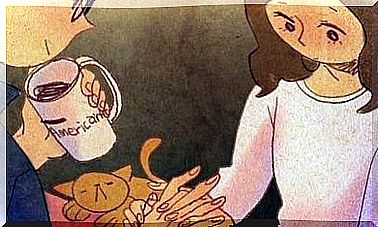Therapy Resistance: Four Types

Therapeutic resistance refers to the forms of behavior, recognition, or emotion shown by a patient that act as an obstacle to his or her development. The extent of resistance varies from person to person.
Although not all patients show resistance, there may be times when the Therapist notices the patient treading. He or she may refuse to tell the therapist about certain problems or he or she will simply not do the previously agreed tasks.
Many psychological models do not pay as much attention to resistance. However, it is important that it is addressed, resolved, and processed in therapy sessions.
Here are some methods that may be helpful in breaking resistance during a therapy visit. They are suitable for any type of therapy. In this case, we focus on methods drawn in positive psychology.
Positive psychology
Positive psychology is a school of psychology that focuses mostly on strengths, not weaknesses. It focuses on an individual’s resources and potential. Many believe this approach was born in 1998, represented by the director of the American Psychological Association (APA).
The basis of positive psychology is to improve strengths and promote growth and human development. The model of health and well-being framed within this movement, for example, seeks to achieve the mental well-being of the individual in matters such as independence and autonomy. It also seeks to find the most favorable environment for all to satisfy desires and needs and to develop the patient’s potential or vital goals.
For this reason, it is useful to include tasks typical of this psychological approach, regardless of the methodological approach to therapy. This is because in addition to ending resistance, it is also helpful to promote change in the individual as well as improve his or her abilities.
Therapy resistance: negative, intrusive and obsessive thoughts

There are many recurring thoughts in numerous pathologies that people are unable to stop. When viewed in the context of cognitive behavior, stopping the idea through self-instruction does not appear to be helpful. However, there are some useful methods for achieving a longer sustainable cognitive structure:
- Methods derived from awareness skills (a psychological process in which present experiences are brought to one’s mind). An invaluable reflection on experiences without getting caught up in them is useful when the patient is unable to suppress their thoughts. Awareness skills are not intended to eliminate them, but to weaken the patient’s self-identification along with subjective experiences.
- Wellness therapy. This is to increase well-being and ability, not just reduce symptoms. Because obsessive thoughts are often negative, increasing a patient’s well-being is definitely beneficial. Methods that are as easy to implement as scoring weekly wellness periods at the beginning of a therapy session can be used instead of asking the patient about uncomfortable periods.
- Narrative methods of positive events of the past. Rewriting past events helps a person deal with negative thoughts. It helps to create positive feelings about the past that the patient might experience as completely negative. The task is to write about the happy moments in the patient’s life and the feelings they bring.
Identification of pathology as natural to humans
Many people go into therapy when they are completely confused by their illness. So completely that most have difficulty identifying with it. It often happens in conjunction with anxiety. People suffering from such diseases usually define themselves with such a label and rarely detach themselves from it.
In fact, they think they have always had anxiety, they have it now and they will always have it. Depathologizing anxiety and other diseases helps to remove this “power” and the patient finds other adjectives that are better suited to describe them:
- Re-imagining the term “anxiety”. Explaining the evolutionary function of anxiety is helpful when it is not excessive. This is to eliminate the negative assessment at the end. It is helpful to differentiate between stress and anxiety. The former is a term used in many context that does not involve pathology. The latter corresponds to the disease. The patient should understand that they do not differ very much from each other.
- Empowerment or competition model (Costa and López, 1986). Emphasis is placed here on strengths, competencies, skills, and abilities that the patient can identify with. It is useful when a person continues to experience anxiety as a pathology, as it is still associated with something derogatory in his eyes. The therapist should try to show the patient other adjectives that may also describe him.
- Interventions based on strengths (Seligman, 2005). The therapist gives tasks such as writing down memories of the era the patient was in and asking him to read them every night. The goal of this method is to enrich the patient’s social circle.
Therapeutic resistance: anticipation and anxiety
When resistance is experienced in anxiety disorders, cognitive reconstruction can become quite a difficult task. The socratic method of absurd thoughts can thus be combined with tasks that help the patient find positive purposes for their problems. This is because anticipating a patient usually causes an uncomfortable feeling:
- Opening up the future. The therapist should discuss accepting life with open arms, curiosity, and interest.
- Vital scar and progress. The therapist looks for traces of the positive and negative experiences that still exist in the individual so that he or she can choose the ones he or she wants to preserve.
The effect of therapeutic change on drugs

People who have started medical psychiatric treatment can bring any positive change to their medication. Because it is not possible to wean medication at once and it is sometimes harmful, the patient should be aware of the full spectrum of positive changes they make. The therapist may also use the Socratic method to dispel such an idea.
The therapist can use graphics that record mood swings that are presumably exponential. He or she can also make the patient aware of possible signs of development and recovery seen through the fingers at each therapy session. Such tasks and methods are part of the selection of alternatives that the Therapist can rely on and with which therapy resistance can be resolved.
He can also use other positive interventions, always keeping the goal of empowerment and depatologization as the ultimate goal. These are excellent basic pillars of positive psychology.









